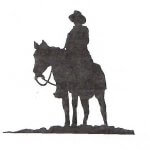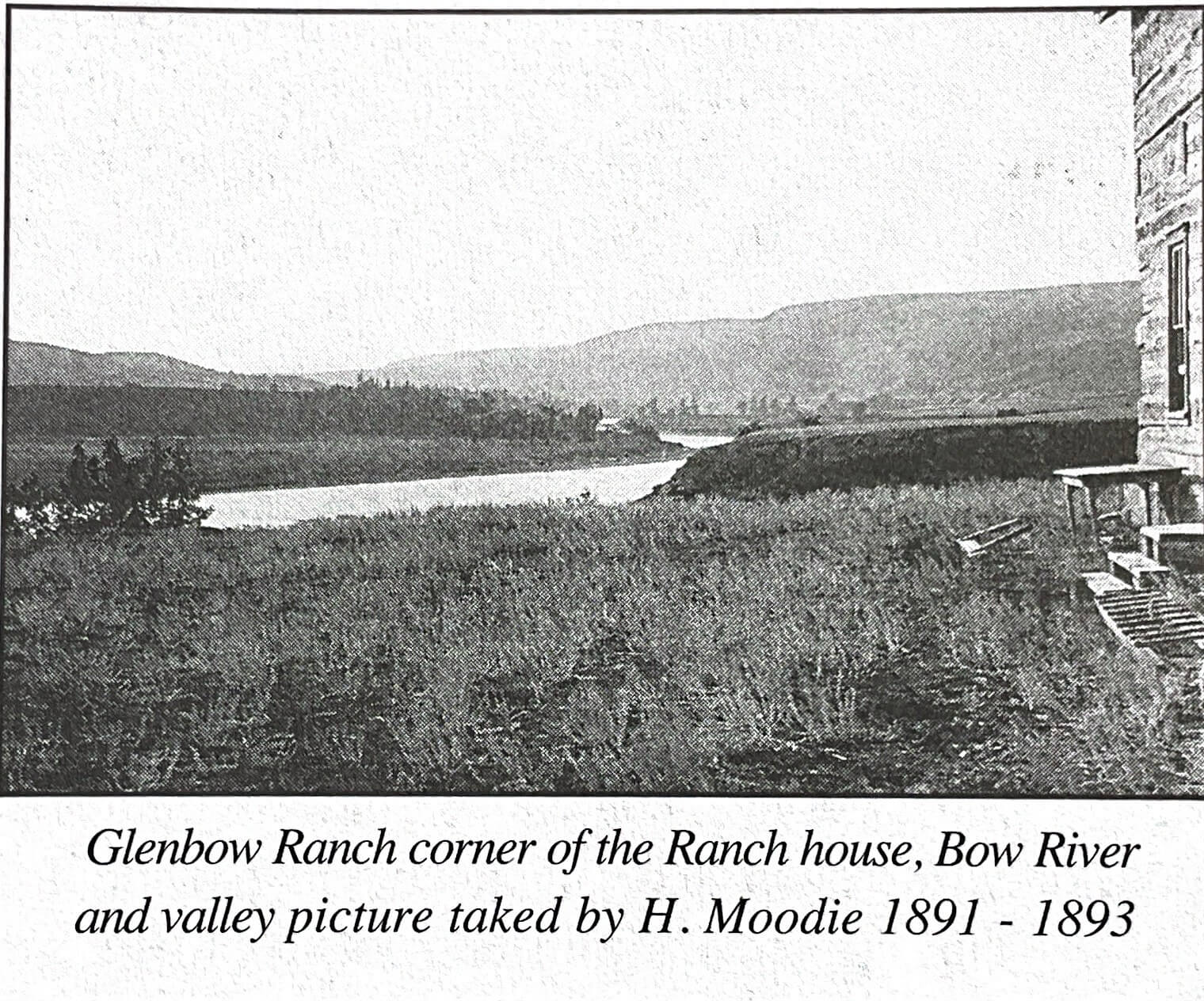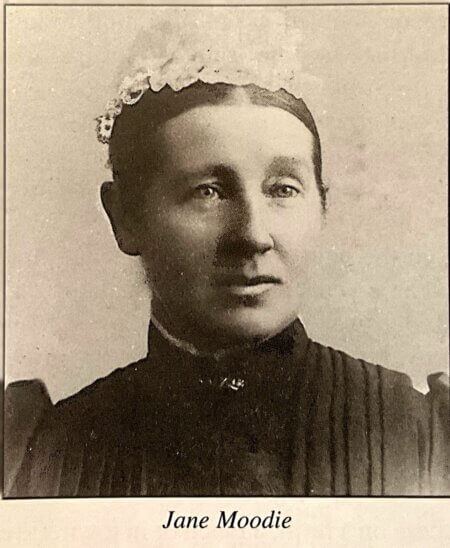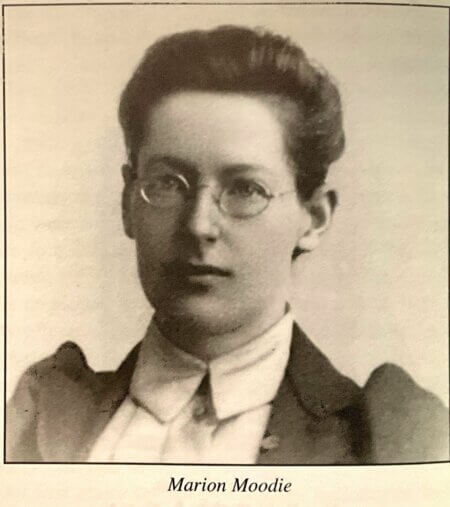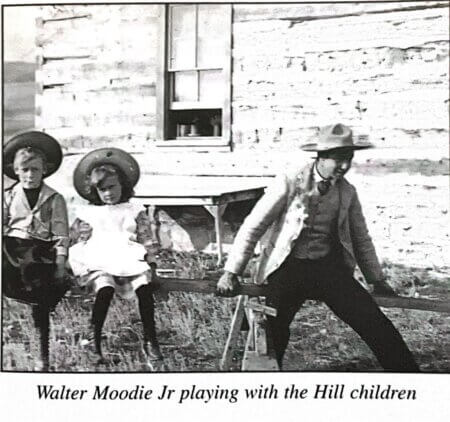Pg 615 More Big Hill Country by Catherine Munn Smith
The Walter Moodie family arrived in the West via the Canadian Pacific Railway, in early September 1891. After a brief stay at the Alberta Hotel in downtown Calgary, they drove by wagon seventeen miles west of town to their new home on the Glenbow Ranche.
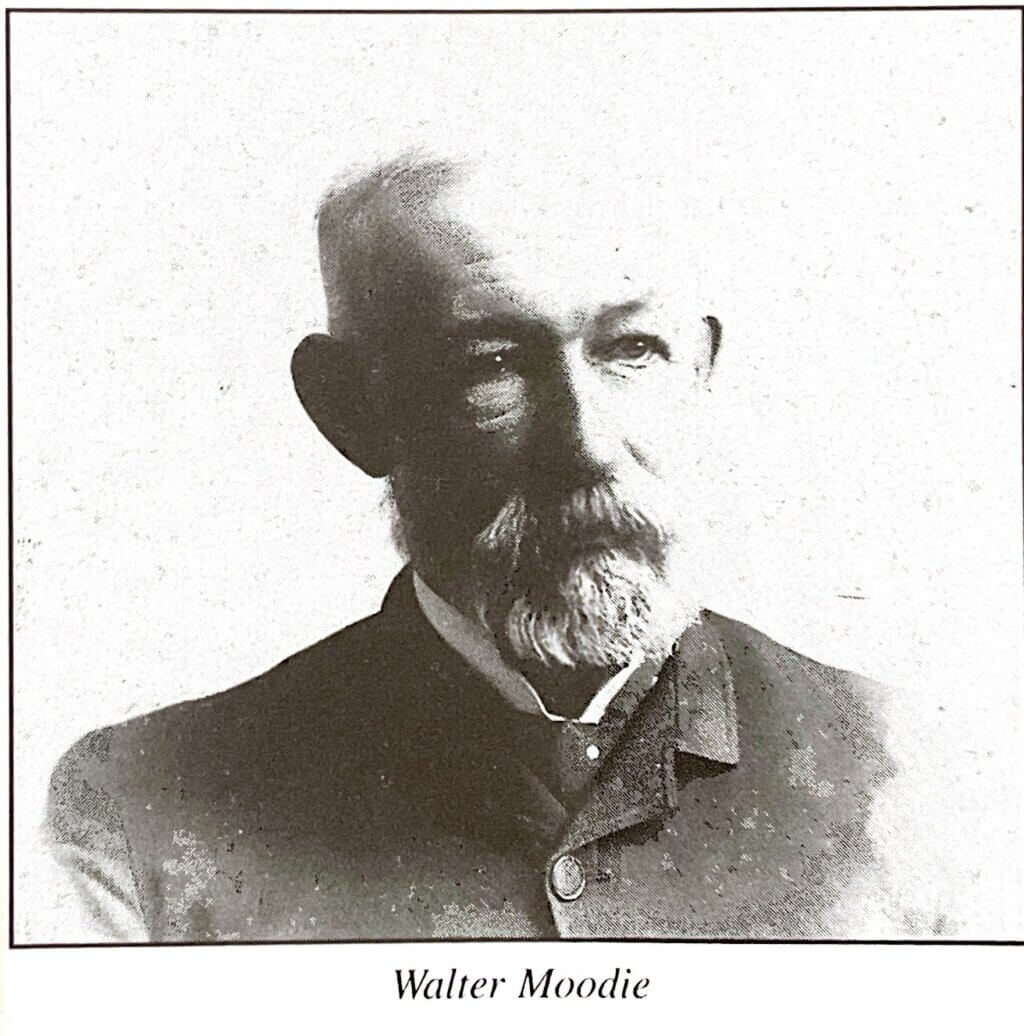
The land had been purchased in the spring of 1891 by Leslie Hill, Mrs. Moodie’s cousin, who had originally homesteaded in Montana. When Hill’s wife died, leaving him with two little girls and a newborn, Hill appealed to the Moodies to care for them in their home in rural Quebec. Now, three years later, Hill sold his horse ranch along the Mussleshell River in Montana and, with the help of eighteen-year-old Walter Moodie Jr. moved his herd across the Canadian/American border to eleven hundred acres of land west of the town of Calgary.
With his years of business experience in Quebec, Walter Moodie Sr. was to be the Glenbow manager. Young Walter took work on a nearby ranch and Janet Moodie and her daughters Margaret, Marion and Lucy kept house, looked after Hill’s three daughters and did their best to raise a garden. In a letter written in 1893 to a cousin in eastern Canada, Marion details the difficulties of gardening in a “dry and barren land” where there was limited water, late and early frosts and unfamiliar pests and predators.
The children were another source of concern when they presented with cuts and bruises, scarlet fever and typhoid. With no doctor in easy reach, Marion took on much of the medical and nursing care of the children and later the care of her mother who was suffering from cancer. In fact it was Janet’s illness which finally caused the family to leave Glenbow and move into Calgary in the spring of 1894 where she died in August of that year.
Leslie Hill remained at Glenbow for a time, finally reg- istering his brand in 1894, but by 1899 records show he had defaulted on payments for the land and shortly there- after his brand was no longer listed. In fact, by 1900 he had left the ranch, the west and Canada to take his three little girls to family in England.
In Calgary, Walter Moodie Sr. found work as an accountant and young Walter took what work he could get as a surveyor. With finances uncertain, and the young women in need of occupation Margaret, the eldest, left for Regina for teacher training and Marion began nurse’s training at the Calgary General Hospital. With seed money left by “Jimmy Smith”, a well-to- do young Chinese immigrant who had worked in Calgary restaurants for many years, Calgary opened its first public hospital in 1890, a tiny woodframe house where bullet holes ventilated the front door and the dining room doubled as an operating room. This is where Marion Moodie entered nurse’s training in January 1895, the first and only student. After three weeks in this cottage hospital, Marion assisted with the move to a handsome new sandstone structure on 12th Avenue East, working twelve hour night shifts in order to relieve the matron and only staff nurse, and stocking supplies in the new hospital in her spare time during the day. Three years and six months later, on July 28, 1898, Marion was presented with a silver medal, the first nurse to graduate from the Calgary General Hospital and the first nurse to graduate in what would later become the Province of Alberta.
Marion spent the next five years traveling throughout southern Alberta, wherever doctors requested she attend a case on a farm, a ranch or in town. Private duty in the home meant twenty-four hour duty with an hour or two off in the middle of the afternoon if she was lucky, and payment for her services if the family was willing to pay.
In the spring of 1903 Marion gave up private nursing and went back to hospital work as the only nurse of an eight-bed hospital in the town of Frank in the Crowsnest Pass. There was no relief for night duty so
she routinely worked sixteen hours or more preparing special diets, keeping the fires going in the cold weather, milking the cow when the doctor was away and cleaning patients, instruments and the wards. All this in addition to diagnosing, prescribing and carrying out treatments in the doctor’s absence and serving as anaesthetist when the doctor performed surgery.
Her one consolation during this period was the natural beauty of the surrounding countryside and Marion spent what free time she had walking, learning the names of local plants and adding to her collection of botanical specimens. This had been a hobby from her youth in Quebec, and throughout the years at Glenbow, in Calgary, and around the province her ramblings often resulted in stories, poems or watercolour paintings.
Early in 1905 Marion returned to Calgary to be with her father and sisters. While living at home she hoped to earn her living as a visiting nurse but found many of the patients who required the most care could pay the least, even fifty cents a visit being too much for some. In addition there were no street cars at that time and she found herself walking up to six and eight miles a day. After two years, just as home care was beginning to pay, exhaustion overtook her. Her health gave out and she withdrew from nursing for a time.
It was during this relatively quiet time that Marion founded the Calgary Natural History Society and frequently displayed her botanical specimens at the Public Library in Central Park.
By 1914 Marion was again involved in nursing, this time as a volunteer packing supplies for the Red Cross
war effort. By the following year she was once more on active duty as Assistant Matron of the Ogden Convalescent Hospital. (This building still stands on Ogden Road, S.E., Calgary.) When the Matron left to go overseas, Marion was made Nursing Sister in Charge under Military District 13 of the Canadian Army Medical Corps where she served until de-mobilization in 1919.
This was the end of Marion’s work in Alberta, although she continued to nurse in a sanatorium in Manitoba until poor health forced her to retire at the age of 60. In 1952 Marion returned to Calgary and the following March attended the opening ceremonies of the “new” Calgary General Hospital, wearing a copy of the uniform she had worn to her graduation.
Marion Moodie died in Calgary in 1958 at the age of 91. Photographs of Miss Moodie and her silver medal are on display on the main floor of the Calgary General Hospital, Peter Lougheed Centre, and her outstanding botanical specimens are part of herbarium collections at Harvard and Stanford Universities, the Smithsonian Institute and the University of Calgary. Some of the specimens almost certainly come from the rolling hills and grasslands near the Glenbow Ranche where Marion and her sisters rambled. This same land, with its spectacular view up the Bow River Valley, will soon be open to the public as part of Glenbow Ranch Provincial Park and, while the Moodie’s involvement with Glenbow was brief, may the history and the beau- ty of the land be protected forever.
For more on Marion Moodie’s life and career, see Alberta History, Winter 2001, Volume 49, #1.
Catherine Munn Smith is the great granddaughter of Walter and Janet Moodie.
